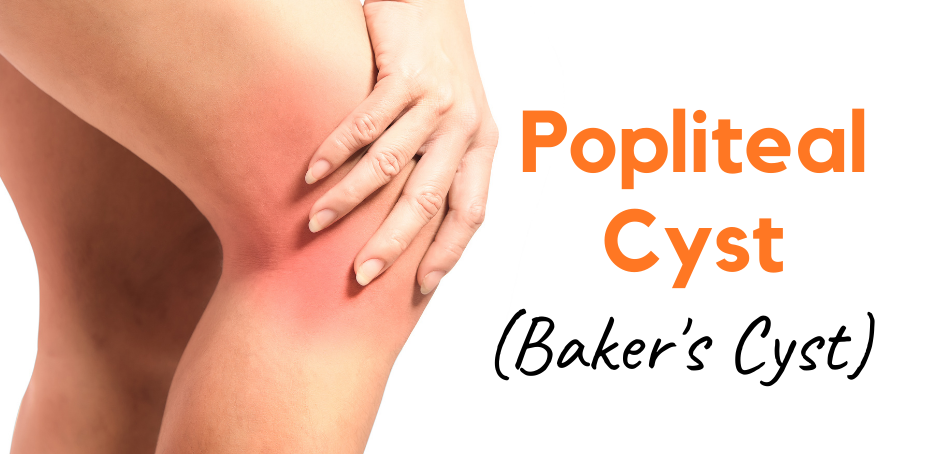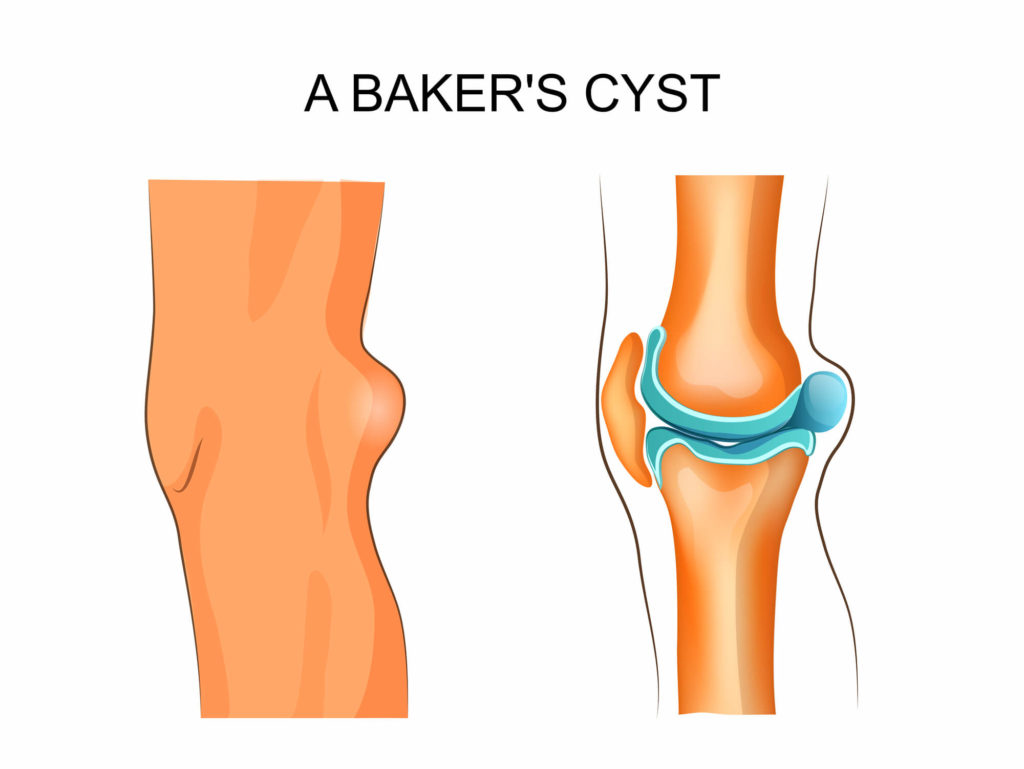Popliteal Cyst

A popliteal cyst, otherwise known as a Baker’s cyst, is a less common but important cause of pain at the back of the knee, it is caused by a swollen bursa. We have bursae all around our body – they are small fluid-filled, cushion-like sacs that sit between bone and tissue. They allow tendons and muscles to glide smoothly over the bursa instead of rubbing against the bone, thereby helping prevent painful injuries.
 Popliteal Cyst Symptoms & Causes
Popliteal Cyst Symptoms & Causes
If you have a noticeable lump or mass at the back of your knee that is making it difficult or painful for you to bend or straighten your knee, then you may have a popliteal cyst. The cyst may also place pressure on the surrounding structures too, causing tenderness, stiffness, bruising – and even numbness, tingling and other neural symptoms.
The cause of the problem may be related to a knee injury, a condition like arthritis, or it may be unclear. Most people don’t notice the cyst until it gets swollen enough to bulge and affect their movement, which may occur some time after the original cause of the problem. While Baker’s cysts aren’t necessarily dangerous and may resolve on their own over time, there’s also a risk that they may burst and cause further problems.
Treating A Baker’s Cyst
Treating the cyst first starts with reducing the inflammation, which should significantly help relieve your pain. Using ice intermittently, elevating your leg, resting and taking non-steroidal anti-inflammatories can help.
Next, your podiatrist will discuss the best ways to manage the cyst and help prevent further swelling. This may involve reducing the strain and pressure on your knee joint which may come from imbalanced, tight or weak muscles, gait abnormalities, footwear or a number of other factors. You may also need help draining the fluid – this must be assessed on a case-by-case basis and depends very much on your symptoms.
FAQs
What else causes pain at the back of the knee?
Medically speaking, differential diagnoses for a popliteal cyst include a muscle strain or tear, a muscle contusion or hematoma (bleeding beneath the skin), a muscle spasm or cramp, deep vein thrombosis, a popliteal artery aneurysm, a meniscal cyst or a soft tissue tumour.
Are popliteal cysts common?
Interestingly, they may be more common than people realise. Research shows that popliteal cysts are routinely discovered on up to 38% of magnetic resonance imaging scans (MRIs) performed in the symptomatic knee. This is good news – as common conditions tend to have a standardised approach to treatment.
Why is a popliteal cyst called a “Baker’s” cyst?
This is named after a British surgeon called William Morant Baker, who wrote a description of 8 cases of popliteal cysts that he had seen.
Does ACC cover treating a popliteal cyst?
If your injury was sustained as a result of an accident, then you may be eligible for ACC. We will fill your paperwork and submit a claim, it is up to ACC whether or not you are covered.


